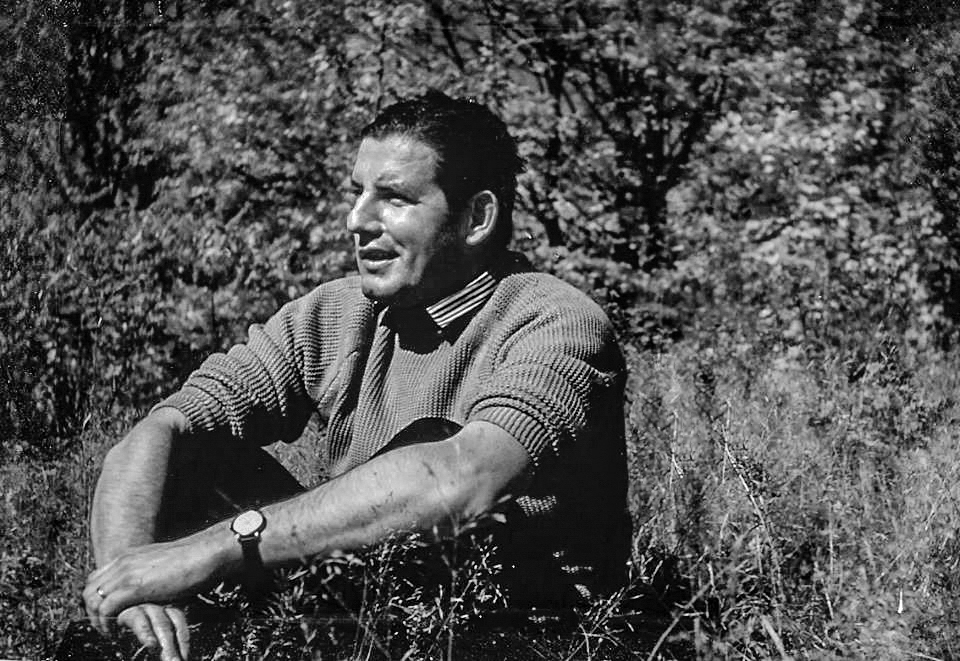
Otto Kolb was a Swiss-born architect and designer who taught design in at the Illinois Institute of Technology in Chicago during the late 1940’s. After moving to New York he became friends with Mies Van der Rohr and Charles Eames. They together were part of the American New Bauhaus movement.
In addition to teaching and furniture design, Kolb built several contemporary homes in the US, among them the Horner-House Illinois. It later entered in the National Register of Historic Places. Moreover, the New York Museum of Modern Art honoured Kolb with an award.
During the 50’s and 60’s, Kolb produced a limited edition of modern furniture. Most noteworthy, Louvre in Paris exhibits one of his chairs. Otto Kolb’s furniture have been featured in auctions held by both Sotheby’s and Quittenbaum.
The Kolb House, built in early 1980’s in Switzerland, is still an important source of inspiration as a fine example of both modern architecture and sustainability. It’s the heart of his final furniture collection treasuring most of the originals.
Otto Kolb Design AG, his own company, produced Kolb‘s furniture. His production expanded into powerhouse furniture retailers and producers like Walter Knoll. Kolb’s original work is rare but can still be found in renowned museums and major auction houses globally. Also, Kolb’s furniture has appreciated in price as demonstrated at previous auctions held by Sotheby’s and Quittenbaum.
Introducing Chicago Kolb
Kolb built several contemporary homes in the US and produced limited-edition modern furniture and lamps: which we call the Kolb Collection. The Kolb Villa, built in early 1980s in Switzerland, is still an important source of inspiration as a fine example of both modern architecture and sustainability
Otto Kolb’s designs expanded into powerhouse furniture brands like Walter Knoll and Louvre—and even MOMA. His original work is rare but still found in renowned museums and major auction houses worldwide.
Otto Kolb embarked on his career as a craftsman and continued to develop his skills as the years marched on: branching into architecture, design, art and staircase construction after completing his bricklaying apprenticeship. This versatility and creativity mixed with an enormous will to persevere led to actionable projects. He enjoyed spending his free time sailing or skiing.
Architect and designer Otto Kolb has a reputation as a teacher at Chicago’s Institute of Design (ID) from 1948–1951. The absence of quotation marks, however, characterizes him as a persona incognita within the Swiss architectural lexicon in the 19th and 20th centuries (published in 1998, two years after his death).
Decades later, his much-noticed but limited early Swiss work—realized in the Zurich area—never captured broader interest. Never permanently settling in the USA, he disappeared from the American spotlight and after pitching his tent again in his homeland, only gained a foothold architecturally with his later work. It’s high time to shine a light on Kolb as a pioneer in his field who groped his way into terrain hardly touched at the time: his work deemed suspicious or even sneered at. A respect for nature and ecological thinking while building was one of his fundamental maxims.
Kolb moved between disciplines and combined architecture, engineering, art and design: a prime example of which is the standard spiral staircase, patented in 1965 and marketed over the next three decades. Leveraging prefabrication, Kolb merged historical staircases, organic spiral construction plans and—inspired by Max Bill’s plastic continuity from 1947—designed Möbius loops as the focal point of a personal villa he built in Wermatswil from 1980–1982. The cylindrical greenhouse in the Zurich Oberland became a mecca for architecture fanatics and was classified as a protected object of regional importance by the Cantonal Monument Preservation Office in Zurich in 2012. Closing the loop, the first house he built in the USA has enjoyed this status since 1996.
As Wermatswil’s Villa Kolb evolved from rotational staircase movement, his opus unfolds through this chef d’oeuvre as nothing less than architectural legacy. His sources of inspiration, teaching, furniture designs and earlier creations all catalyze within him and are addressed in teaching, design and selected buildings and projects chapters.
He reached a culmination point in Wermatswil not least in the adaptation of Japanese stylistic devices, which have since continually developed. Traditional Japanese architecture occupied him throughout his life—reflected in several of his buildings and projects—with a separate chapter dedicated to the same, discussing this in the context of Japan’s European reception at the time.
Kolb’s work is concentrated in Switzerland with Wermatswil, Brüttisellen, Humlikon, Wallisellen, Fällanden and Zufikon located in Zurich, specifically. In the USA, buildings are scattered across the Midwest and East Coast (Chicago, Beverly Shores, Providence, Plainfield, Princeton, Westport, Hudson Heights and New York).
“Mies, Wachsmann and Xanti Schawinsky became my best and closest friends in America. I owe them not only many happy hours, but above all, productive, often blatant arguments,” Kolb once said. Paffard Keatinge-Clay, who described the Institute of Design as a haven for European emigrants, also joined in the tone. Referring to Kolb, he highlighted the role of Richard Buckminster Fuller: “Such talent all having a hell of good time!” Architect Roth also commented benevolently in his diary: “Otto Kolb is developing very well.”
As turbulent as school leadership was, Kolb cherished one constant: “…the creative restlessness that exerted a friendly influence on the students. The basic tenet of all teachers was to develop the critical potential in every student.”
An anonymous art critic commented on the same with precision two years later in an Arts & Architecture review of the Open House46 exhibition at the ID: “His sensitivity – often stiffed by a passive education which stresses docility and memorization – is revitalized by the active process of working with tools and materials…he has learned to penetrate basic needs rather than imitate or blindly extend accepted patterns.” A passage from a lecture provides further evidence of Kolb’s emphasis on critical thinking while demonstrating topological properties of the Möbius strip: “It’s a kind of phenomenon but it shows you simply…The logical thinking…is just misleading…[It] is built upon a rigid discipline which is funneled into us by education…I do not fill you up with knowledge but teach you…the principle of approaching something. Approach is the main thing: analyses, synthesis and product.”
The division into a three-semester basic course and five-semester postgraduate course—which brought specialization into a subject area—was also reflected in didactics. Kolb summarized the attitude of the school during the first year and a half of study: “Analysis important, thinking important, result unimportant.” As for the first half of the postgraduate course, he wrote: “Analysis, think process and result important.”

